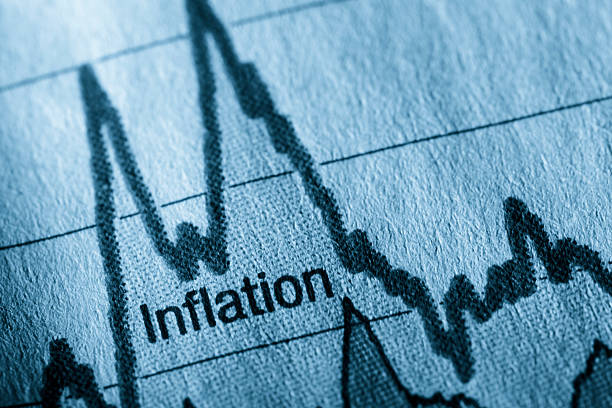Good Morning All, the first signs that an economic recovery is underway in the UK were seen on busy high streets and roads last week and in figures released by the Office for National Statistics (ONS).
According to this report, CHAPS data showed that spending had rebounded to 91% of the pre-pandemic level and footfall in shops was at 75% of its 2019 level. Hopefully, these figures will continue to grow, and the release of the pent-up demand that the Bank of England has been touting turns into reality. Europe also seems to have turned a corner with its vaccination rate increasing steadily, and whilst still lagging both the UK and the US, it now looks better placed to achieve its targets. The markets remained relatively quiet, taking the good news in their stride, and over the week, sterling held steady against the dollar and has opened at just above $1.3900. The euro rebounded strongly against both sterling and the dollar as traders reappraised their pessimistic positions, and this pushed sterling down below €1.1500 for the time being.
We have a busy week ahead as the month draws to a close with plenty of data to digest and, most significantly, the monthly meeting of the US central bank, The Federal Reserve. After a week of mixed but mostly upbeat economic data, more of the same is expected. However, with new Covid cases in India topping 300,000 daily, fears of another outbreak remain both here and in Europe. The daily vaccination rate will continue to have a marked effect on currencies, especially the pound, due to the UK’s strong links to the Indian sub-continent. The pound may also suffer some political wobbles with domestic elections looming, which could see the SNP increase its share of the vote in Scotland, leading to pressure for another referendum, at the same time as allegations of sleaze continue to surface. As usual, there will be month-end pressures to contend with, exasperated again by a long weekend in the UK.
UK
Sterling was driven as much by technical factors last week as it was by the economic data that was released and, as it is so often, was buffeted by the shift in international demand for the dollar. Being a “Beta” currency, it rose and fell in tandem with US yields and stock markets and eventually settled unchanged on the week, having failed to break above $1.4000. The released data was generally supportive of sterling, good PMIs, strong retail sales, inflation rising, and unemployment creeping lower, reinforcing expectations of a solid recovery in the country. The data docket in the week ahead is empty, and no speakers are scheduled from the Bank of England; however, Ben Broadbent did give a bullish appraisal of the economy at the weekend. With no data for traders to get their teeth into, we expect the pound to be driven by outside forces, especially in the latter part of the week, after the meeting of the US Federal Reserve and month-end rebalancing starts to come into play.
Euro
The euro put in a good performance last week and ended over a cent up against the dollar and a eurocent stronger against sterling. Confidence is returning, as shown by the Purchasing Manager’s reports that were released on Friday. This will be boosted by the increase in vaccination rates and the further good news that the Karlsruhe constitutional court didn’t stand in the way of the ratification of the EU fiscal stimulus plan. We have a raft of economic data ahead of us this week, and seemingly every member of the ECB is also speaking, starting with ECB Chief Economist Richard Lane today followed by its President Christine Lagarde on Wednesday. This morning, the IFO business climate readings for Germany are released. On Wednesday, consumer confidence data for France and Germany are issued, with a continuation of the positive numbers of last week expected. The Eurozone sentiment and confidence data are released on Thursday, as is the Consumer Price Index (CPI) for Germany. We close the week with potentially market-moving data with Eurozone CPI, Unemployment, and Gross Domestic Product on Friday.
US
The monthly meeting, on Wednesday, of the US Federal Reserve Open Market Committee (FOMC) will dominate the market’s thoughts in the week ahead. Despite the US economy rebounding strongly and unemployment falling, the Fed is unlikely to change its accommodative monetary policy just yet. However, the press conference after the meeting will be listened to for any hints on future policy changes. Ahead of the Fed meeting, sales of US Durable Goods are reported today, and we then have a lull on the data docket until the regular weekly jobless update and the US GDP figure for the first quarter are released on Thursday. The week closes with a frantic Friday when Personal Income, Spending, and consumption data are released. The highlight on the speaker front will be Federal Reserve Chairman Jerome Powell’s press conference on Wednesday after the FOMC. President Joe Biden is also scheduled to speak at a joint session of Congress when he is expected to expand his controversial plans to raise taxes.
Scandi
The Swedish krona was very much rangebound throughout most of last week, and the lack of macro data did not offer any help for participants hoping for more volatility. This week is far more action-packed, with the Riksbank setting interest rates on Tuesday. Inflation has been creeping up lately, but the Riksbank is not expected to increase rates, and many believe that the 0% rate will remain in place for the foreseeable future. The press conference with Riksbank Governor Ingves will be more exciting and one we will monitor closely. The PPI figures and the Unemployment Rate are released at the same time at 08:30. On Wednesday, we will get a health check on the Swedish retail sector, and on Thursday, we will study the latest Economic Tendency Survey.
Over across the fjords in neighbouring Norway, the Norwegian Krone suffered the same lackluster week as its big brother. This week does not see any important data being released apart from the Unemployment Rate, which is out on Friday. It is expected to have changed ever so slightly, coming down from 4.2% to 4.1%, which may benefit the incumbent government seeking re-election later in the year.
Have a great week.
Synergy Team







